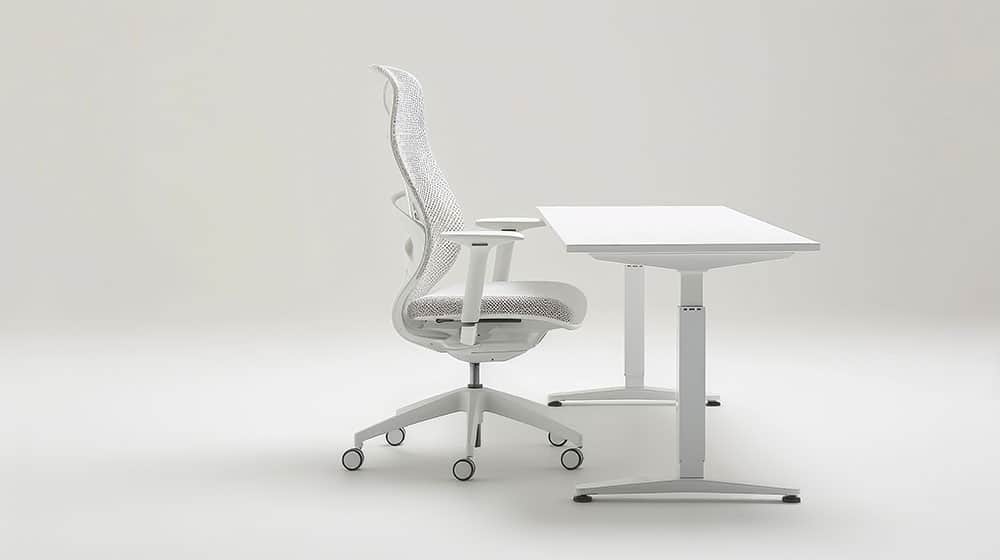Introduction to ESD Chairs
In the ever-evolving landscape of modern workspaces, particularly those dealing with sensitive electronic equipment, the significance of electrostatic discharge (ESD) protection cannot be overstated. An ESD chair is more than just a piece of furniture; it’s a crucial component in safeguarding both personnel and electronic components from the potentially damaging effects of static electricity. This introduction explores the functionality and overarching benefits of ESD chairs, setting the stage for a deeper understanding of their role in contemporary work environments.
The Science Behind ESD Chairs
Static electricity is a familiar phenomenon, yet its implications in an industrial or laboratory setting can be profound. At the core of ESD chair technology is a design aimed at preventing the buildup of static electricity and facilitating its safe dissipation. This section delves into the mechanisms by which ESD chairs protect against electrostatic discharge, offering readers a clear understanding of the principles that make these chairs an indispensable part of ESD-sensitive setups.
Key Features of an ESD Chair
When it comes to ESD chairs, not all are created equal. From materials that are conductive versus static dissipative, to adjustable features enhancing ergonomic benefits, the characteristics of an ESD chair directly impact its effectiveness and user comfort. This exploration of key features provides insight into what makes an ESD chair fit for purpose, including durability and maintenance considerations that ensure long-term functionality.
Selecting the Right ESD Chair for Your Workspace
Choosing the appropriate ESD chair involves more than meets the eye. This comprehensive guide walks readers through the process of assessing the specific needs of their electronic environments, along with navigating compliance standards and certifications that attest to an ESD chair’s efficacy. Practical advice and criteria offer a pathway to making informed decisions in ESD chair selection.
ESD Chairs in Various Industries
The application of ESD chairs transcends beyond the obvious settings of electronics manufacturing. From laboratories and clean rooms to aviation and telecommunications, the necessity for ESD-safe seating is widespread. This section highlights the versatility of ESD chairs, showcasing their importance across a variety of industries and emphasizing the universal need for static protection.
ESD Chair
Innovation is at the heart of ESD chair design, with new technologies continually emerging to enhance their protective capabilities and user experience. Through case studies and success stories, readers will gain insights into how ESD chairs are implemented effectively across different sectors, highlighting the tangible benefits they bring to organizations committed to ESD safety.
Combining Comfort with ESD Protection
Ergonomics plays a pivotal role in the design of ESD chairs, ensuring that comfort does not take a backseat to functionality. This section emphasizes the importance of ergonomic features that promote employee wellbeing, illustrating how comfort and ESD protection can coexist harmoniously in workplace seating.
Maintenance and Care for ESD Chairs
To maintain their effectiveness, ESD chairs require routine care and maintenance. This practical advice on performing regular checks, cleaning procedures, and troubleshooting common issues helps users preserve the integrity of their ESD chairs, ensuring they continue to provide reliable protection against static discharge.
Future Trends in ESD Chair Technology
Looking ahead, advancements in materials and design promise to further enhance the efficacy and comfort of ESD chairs. This forward-looking perspective considers the potential developments in ESD chair technology and their implications for workplace integration, offering a glimpse into the future of ESD-safe seating.
Frequently Asked Questions
- How does an ESD chair work?
- Can ESD chairs be repaired if they lose their conductivity?
- Are there ESD chairs suitable for home offices?
- How often should ESD chairs be tested for effectiveness?
- What distinguishes an ESD chair from a regular office chair?
Conclusion
The essential role of ESD chairs in protecting sensitive electronics extends beyond their function as mere office furniture. They embody a critical aspect of workplace safety in environments where static discharge poses a risk. By fostering a culture of ESD safety, organizations can safeguard their assets and personnel, underscoring the importance of informed choices in ESD chair selection and maintenance.


